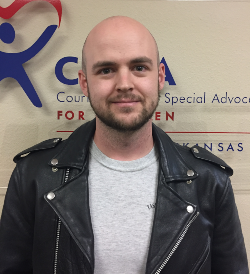 What’s it like to advocate for a child in foster care during a pandemic? According to CASA James Curtis, what an advocate does hasn’t changed as much as how they do it. Below is a summary of a recent chat with James.
What’s it like to advocate for a child in foster care during a pandemic? According to CASA James Curtis, what an advocate does hasn’t changed as much as how they do it. Below is a summary of a recent chat with James.
Q. How has the pandemic changed your CASA advocacy?
A. Honestly, not a lot. I’m still staying in great contact with my CASA child as well as submitting court reports and observations. The biggest change is that court and DHS meetings have moved to the Zoom platform. This can be a little bit of a challenge to make sure all of the parties (attorneys, DHS, parents, etc.) have access and enough bandwidth to fully participate. But, it seems everyone is finding a way to make it work.

Q. How has your CASA child been impacted by all of these changes?
A. He’s done surprisingly well. He struggles a bit in a traditional school setting, so working with a patient foster parent at home has been good for him. The hardest part is that he hasn’t been able to physically see his parent. They had been separated for months prior to COVID-19, and due to social distancing, this separation continues. It’s been really difficult and sad for him.
Q. Can you imagine any opportunities or possible challenges that may come from the integration of technology in future cases?
A. I can definitely see the benefit of using video conferencing to allow more parties of the case to participate in mid-day meetings and hearings. My biggest worry would be that, for convenience, there would be a desire to substitute in-person parent or sibling visits with virtual ones. There’s no substitute for a hug.
Q. Do you feel your overall purpose or focus has changed during this pandemic?
A. No. I volunteer because I believe we can change the trajectory of a child’s life if we are able to intervene at the right time. This is as critical now as it was a few months ago.